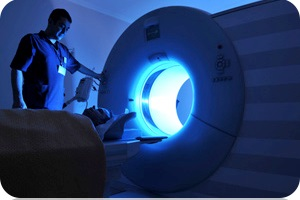Unit 7: Lesson 5: Body Language
Lesson 5: Body Language

Lesson 5: Body Language
Another aspect that can improve communication is body language. Have you ever talked to someone who didn't seem to be listening? What body language made you believe that the person wasn't paying attention to you? How did this make you feel? Our body language conveys a great deal of information to others, especially in health science settings. Body language is one form of nonverbal language, which is communication without words.
Studies of healthcare settings have shown that patients and their families are susceptible to the body language of the healthcare providers with whom they come into contact. They may look to professionals' body language due to the fear and anxiety often present in healthcare settings to see whether the provider is honest with them about the information they are receiving and to gain information before the professional has spoken. For example, parents of a sick child will often pay attention to the body language of the doctors and nurses to help them determine how sick their child is and what the prognosis may be for the child.

Healthcare professionals also need to pay close attention to patients' body language. Facial expressions, gestures, and body posture can inform professionals about how a patient may feel or what might be troubling them. For example, some individuals may be reluctant to say how bad they are hurting, but their body language may convey this to health science professionals. Body language may be all a healthcare professional must do in some cases, such as with small children or individuals who may be unable to communicate in other ways at that time. One example of this is an individual who is on a respirator and unable to talk. Finally, a professional's body language may encourage (or discourage) patients and their families from becoming more involved in their care.
To help improve communication, people can use many simple actions and techniques. These include:
- Ask open-ended questions. This can help patients open up about what they are experiencing and what problems they may have.
- Create a 'team'. Using words like 'we,' 'we're,' and 'us' can help the people you are talking to feel that you are all working together on the problem. However, knowing when not to use these words is also essential. Some individuals may be offended if you ask them, 'What symptoms are we experiencing today?' since only one person is experiencing them. Discussing what 'we' can do to solve the health issue may be more helpful.
- Use the person's name when talking to them. Although you want to avoid overusing someone's name, greeting people by name and using their name when it seems natural to do so in a conversation can help each patient feel that they are essential to you.

One area of body language that can be important in healthcare settings is personal space. In settings like hospitals, patients have to give up not only the privacy that they are used to but also some of their personal space. Diagnostic testing, moving from place to place, and health monitoring all involve close contact with virtual strangers. Patients also might be too sick or unsure of their rights in maintaining the personal boundaries with which they are comfortable. Studies on personal space in hospitals have found that patients may be annoyed by moving furniture in the room, taking furniture out of the patient's room, and handling personal belongings if the patient is not asked about these actions in advance.
Some actions that can help patients reserve some facets of their privacy and personal space include:
- Respect the patient. Respect people's preferences about their bodies, rooms, and personal belongings whenever possible. Ask before doing something that might infringe on a person's privacy or personal space.
- Give information. Talk to patients about what you will be doing and why you'll be doing it. For example, you may need to rearrange the furniture in a hospital room for a piece of equipment. Explain that to the patient before you begin moving things around.
- Maintain a patient's privacy. Whenever possible, allow patients to keep their bodies covered in a way that they are comfortable.
In this unit, we have learned more about health communication. As a vital part of the health science field, healthcare professionals must communicate effectively with patients and other health science professionals. We discussed some communication barriers that can surface in healthcare settings and explored some of the characteristics of effective communication. Finally, we learned about some of the techniques and practices that can help people create more effective communication with others.
Think About
- Why is communication important in the health sciences?
- What characteristics contribute to effective health communication?
- What barriers to effective communication may occur in health science settings?
- What is active listening? How can it be used in the health sciences?
- Why is body language important in the health sciences?
